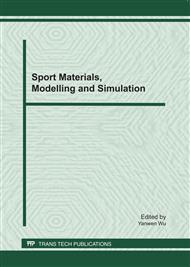p.251
p.257
p.261
p.266
p.271
p.277
p.282
p.287
p.291
Research and Application of Wavelet Neural Networks of Particle Swarm Optimization Algorithm in the Performance Prediction of Centrifugal Compressor
Abstract:
The traditional method of centrifugal compressor performance prediction is usually the BP neural network, however, the problems are that prediction accuracy is not high enough, convergence is slow and it is apt to fall into local optimal solution. In order to predict the performance of centrifugal compressors more accurately and identify the implicit problems in advance, now we combine the particle swarm optimization, wavelet theory and neural networks, to establish performance prediction model of centrifugal compressor based on wavelet neural network of PSO. First, set the various parameters of wavelet neural network as the particle position vector X and the energy function of mean square error as the optimized objective function. By particle swarm optimization algorithm to iterate the basic formula to obtain the corresponding WNN coefficient and then use back-propagation algorithm to train WNN to approach any nonlinear function. Simulation results show that application of the prediction model can achieve the accurate prediction of performance and monitoring of centrifugal compressor. The prediction model has the advantages of simple algorithm, stable structure, fast calculation of convergence speed and strong generalization ability with a prediction accuracy of 99%, 13% higher than prediction accuracy of traditional methods, which has a certain theoretical research value and practical value.
Info:
Periodical:
Pages:
271-276
Citation:
Online since:
February 2011
Authors:
Price:
Сopyright:
© 2011 Trans Tech Publications Ltd. All Rights Reserved
Share:
Citation:


